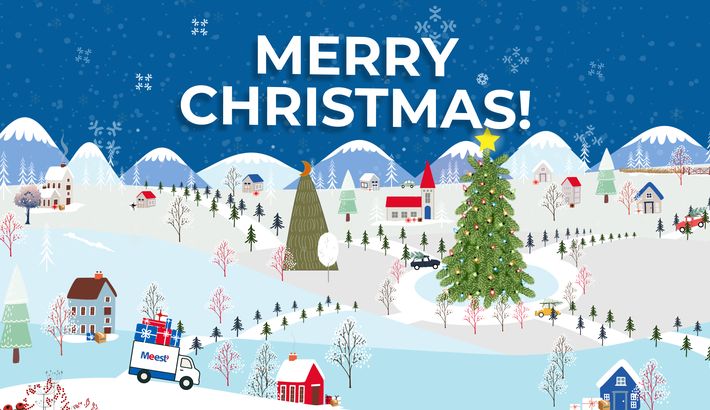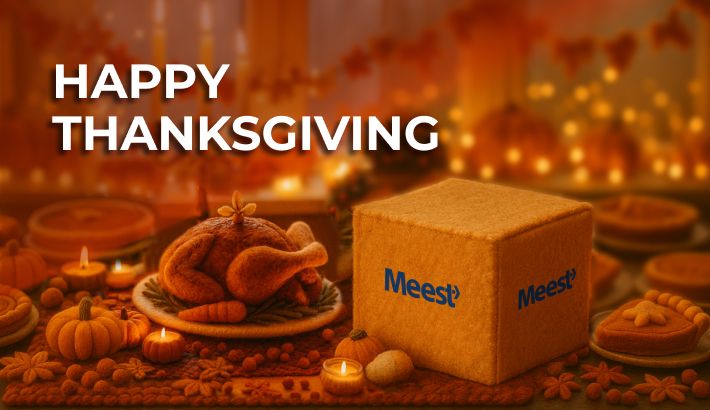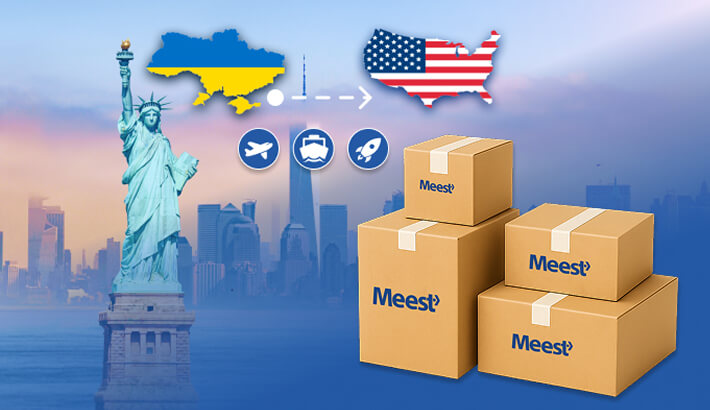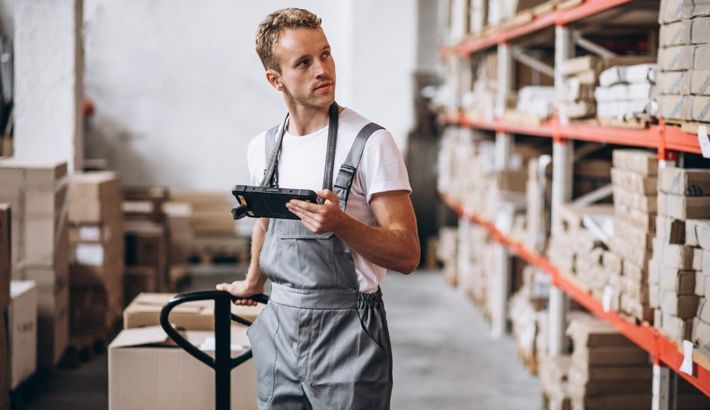

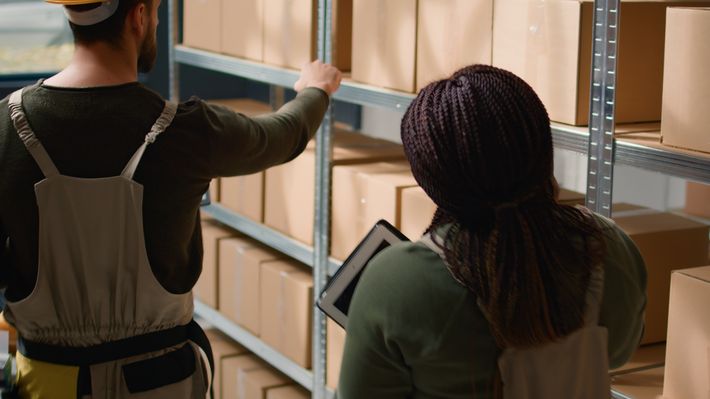
The Complete Guide to E-commerce Fulfillment in 2025
If you have an up-and-coming business and the number of orders exceeds the workload that your current team can handle efficiently, it might be high time to consider taking advantage of a third-party logistics service (3PL). Given the current trends for rapid delivery, personalized packaging, and frictionless returns, having a 3PL partner is no longer a privilege; it is a necessity.
Given that it will handle an essential part of your business related to order processing, packing, delivery, and returns, the e-commerce order fulfillment process can streamline your service significantly. Taking into account all the incorporated processes, some consider it to be a complex and challenging option for their business and omit it without fully estimating the benefits.
Yet, it is not that difficult to implement into your business strategy, and you do not need to be a logistics expert to get started. This article provides a complete guide on what you might expect in terms of e-commerce fulfillment services and how to use them to streamline your business. You can also find answers to the common questions about costs, models, and key solutions, which are also a part of the guide.
Understanding E-commerce Fulfillment
What is e-commerce fulfillment, and what processes can it handle instead of your employees? It is the end-to-end process tailored for e-commerce businesses that can handle everything from order processing to delivery and return.
Professional 3PL partners offer a full-cycle service, which often includes the following:
- acceptance and labeling of each product;
- storage;
- order processing;
- boxes packaging;
- delivery of orders;
- processing of returns.
While the exact selection of services varies from company to company, it is essential to have support at all stages.
Those services mentioned above are the basis, but it is also worth paying attention to the additional benefits provided (e.g., real-time inventory reporting and 24/7 video surveillance).
From Click to Delivery: Navigating the E-commerce Fulfillment Flow
Let’s take a closer look at how e-commerce order fulfillment process with a detailed guide on each step.
Acceptance and Labeling
This is the starting point and one of the most challenging stages of the process. While having inventory delivered into a partner warehouse and storing it there sounds simple, there is plenty of work behind the scenes.
Every product is checked and recorded in the warehouse management system (WMS). Details such as quantities and SKUs should be added, ensuring that a warehouse has all the necessary information about goods. Damaged items are identified at this stage.
On top of that, a labeling system is used to ensure that each item is identifiable and traceable throughout the fulfillment process. Labels may include SKUs, barcodes, QR codes, or RFID tags, which enable automated scanning during picking, packing, and returns.
Storage
Once registered and labeled, items are placed into designated storage zones, using strategies like bin locations, FIFO (first-in-first-out), or even AI-driven placement algorithms. While storage strategies vary, companies often select those that shorten travel paths and reduce picking errors. At the same time, temperature-sensitive items or fragile products may require specialized environments, and specific storage rules for those special-attention goods often come as a priority.
Order Processing
As soon as you place the order, it is captured by the e-commerce platform and transferred to the fulfillment provider. That is when purchased items are analyzed by the order management system. Its main task is to connect with the WMS and see if purchased goods are in stock.
If the items are available, the logistics part begins. Inventory levels, customer location, and service level agreements (SLAs) are taken into consideration to determine the correct fulfillment location. Based on the outcomes of the analysis, the order can even be shipped from different warehouses. Yet, it normally happens only if all the purchased products are not available in the same warehouse.
Boxes Packaging
Once the order is ready for packing and shipment, the work in the e-commerce fulfillment warehouse begins. The staff receives instructions on what items, in what quantity, should be packed as well as information about where they are stored in the warehouse.
To enhance the efficiency of order picking and box packing, many companies use the following strategies:
- wave picking that uses scheduled picking and packing based on the pickup times;
- batch picking that groups similar orders to do them during the same period;
- zone picking that requires assigning workers to specific zones.
Those methods are interchangeable, and the exact choice depends on the current situation with the volume, delivery locations, etc.
Often, scanning goes between picking and packing to ensure that the correct items have been collected. Then, they’re securely packed and prepared for shipping at the packing station. There is often a standardized packing process in place to ensure all orders are packed quickly and reliably.
Delivery of Orders
Shipping and delivery are one of the last e-commerce order fulfillment process steps. At this stage, speed, cost, and accuracy become a priority. The most suitable carrier is selected based on multiple criteria, including destination place, parcel attributes, speed, available discounts, etc. This is an automated process that compares those features among different delivery companies to ensure the optimal choice for a given order.
With labels printed, tracking numbers generated, and the package handed to the selected shipping company, the work of the fulfillment center ends. Unless the return of goods is requested.
Processing of Returns
The return process, or reverse logistics, can be initiated by a customer with a specific request raised. Products are shipped to the warehouse, where they are checked and either added to stock or kept aside. The return process should be clear and easy-to-use, as well as cost-effective, given that it causes inconveniences to both parties — the seller and the buyer.
Fulfillment Models and Their Pros & Cons
The right fulfillment model is key to a successful e-commerce business, as it can either enhance customer experience or worsen it. Everything depends on how the process is organized and performed. Therefore, it is worth spending time assessing available models to pick the one suitable for your business.
In-House Fulfillment
This model means that the business processes orders with its own capabilities in facilities, staff, and logistics.
Key benefits:
- easy to launch, maintain, and manage;
- full control over operations and branding;
- direct oversight of inventory.
At the same time, the list of drawbacks includes:
- high upfront costs;
- limited scalability;
- logistics expertise is needed.
While small businesses can consider this strategy, big-scale e-commerce players often do not consider it as an option.
Third-Party Logistics (3PL)
3PL allows brands to hand over order processing to another company that has all the necessary facilities and processes in place.
Key benefits:
- scalable and flexible;
- access to logistics expertise and tech;
- faster shipping via distributed warehouses.
The list of drawbacks includes:
- less control over packaging and customer experience;
- possibility of hidden fees.
However, not all 3PLs offer the same level of flexibility, quality, or visibility, so it is essential to select the right partner.
Dropshipping
Dropshipping is a model that allows sellers to offer products without holding inventory, as orders are fulfilled directly by suppliers.
Key benefits:
- own startup costs;
- no inventory management;
- flexibility and scalability;
- wide product variety.
Main drawbacks are:
- limited control over quality and shipping;
- lower profit margins;
- high competition.
It’s ideal for low-risk entry into e-commerce, but comes with trade-offs in control and profit margins.
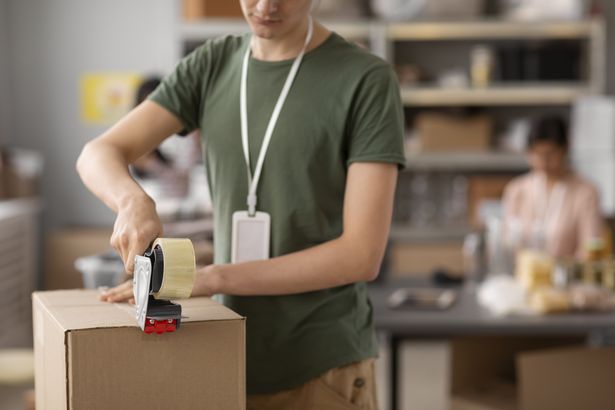
Common E-commerce Fulfillment Challenges
E-commerce fulfillment operations are not as simple as they seem at first sight. Those are complex processes that can easily derail without the right systems in place. Common challenges include:
- Slow shipping speed. Customers always expect fast delivery, and delays can lead to major dissatisfaction.
- Inventory mismanagement. Overstocking ties up capital, while stockouts slow down sales.
- Returns complexity. Inefficient reverse logistics can frustrate customers, so they can refuse to buy anything from that seller again.
- High shipping costs. Those are pain points for international or last-mile delivery.
- Tech integration gaps. Disconnected systems can slow down order processing and tracking.
Furthermore, many fulfillment companies struggle during peak seasons or rapid growth. Solving these requires a mix of automation, strategic partnerships, and real-time visibility across your supply chain.
Choosing the Right Fulfillment Partner
The choice of a fulfillment partner is a key decision that affects customer loyalty, business growth, and profits, so it's really important to keep it in mind.
Key Criteria to Access
When selecting an online shop fulfillment partner, there are several factors to consider, namely:
- proximity to customers that can help reduce shipping costs and delivery times;
- possibility of handling seasonal spikes or international expansion;
- seamless connections with your e-commerce platform, CRM, and inventory tools;
- responsive customer service and dedicated account managers.
As soon as the fulfillment partner in question checks all those boxes, you can be certain that your choice of the company can scale up your business.
Red Flags to Avoid
There are features that are seen as drawbacks by many professionals and cancel in terms of e-commerce fulfillment. Here are the features that should keep you vigilant and question the reputability of the fulfillment company:
- vague pricing structures or/and hidden fees;
- poor communication or delayed responses;
- outdated technology or lack of real-time tracking;
- limited flexibility in service offering.
Scan potential partners for those red flags to ensure you have selected a reliable fulfillment company.
Questions to Ask
Before partnering with a certain fulfillment company, you might like them to answer a couple of questions that can help you make the right choice. The most common questions among those are:
- What’s your average order accuracy rate?
- Can you support multi-channel fulfillment?
- How do you handle returns and reverse logistics?
- What kind of integrations do you provide with e-commerce systems?
Answers to those questions can provide you with valuable information about the process, the quality of provided services, and the overall expertise of a given e-commerce fulfillment provider.
Cost Breakdown and Optimization Tips
The 3PL model is highly effective for businesses, but it is also cost-consuming. Be ready to pay storage fees (based on volume), pick and pack labor, shipping costs (influenced by weight, size, and zones), and returns processing. Basically, each step in the fulfillment services results in a fee.
Some of the ways in which the cost of this service can be optimized are as follows:
- use smart inventory placement to reduce transit distances and delivery times;
- benefit from carrier discounts through negotiated rates;
- prioritize packaging efficiency to minimize dimensional weight and save on shipping;
- automate returns workflows to lower manual handling and accelerate refunds.
Still, cost-smart fulfillment doesn’t mean cutting corners. It rather means making strategic choices that reduce overhead while enhancing customer experience.
Why Choose Meest-America as Your Fulfillment Partner?
Meest-America ensures a good balance between secure storage, effective order processing, efficient delivery, and operational cost. With smart warehouse locations across Europe and North America, you receive reduced shipping times and expenses.
At the same time, integrated tech streamlines inventory, order tracking, and returns, optimizing your operations. Furthermore, Meest US combines reliability with flexibility, which makes it perfect for growing businesses aiming to expand cross-border with ease and efficiency.










